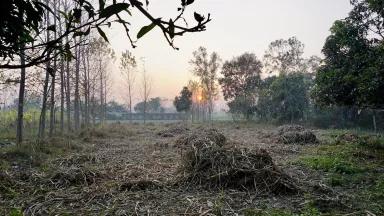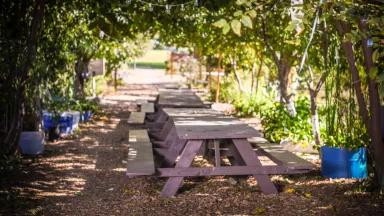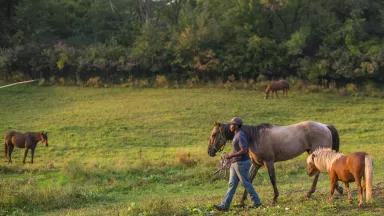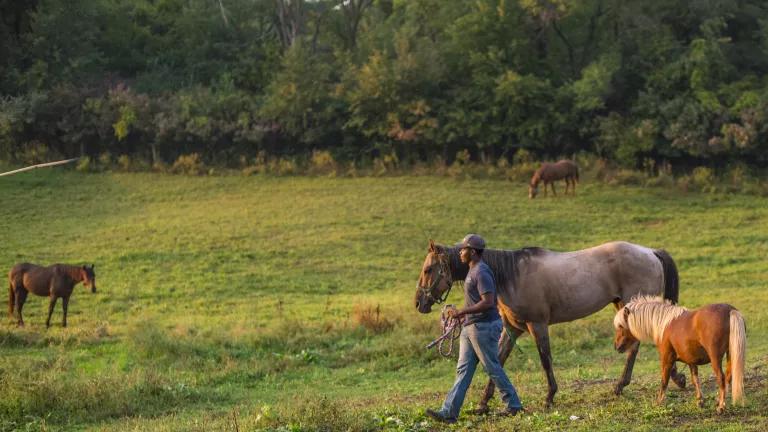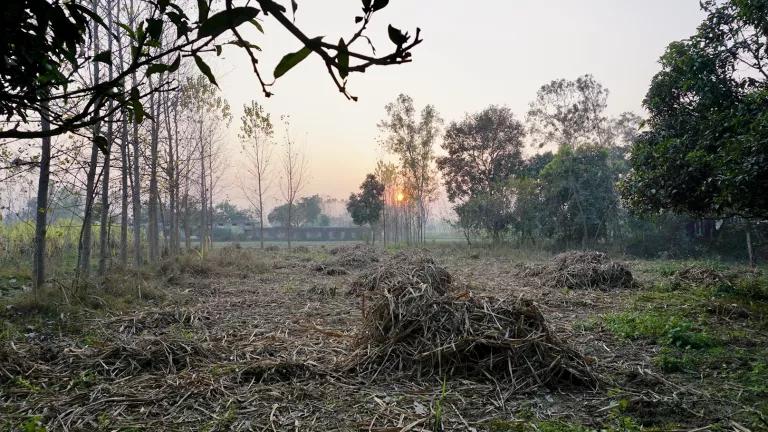Regenerative Agriculture Part 2: The Principles
In describing what regenerative agriculture means to them and how they embrace the philosophy on their operations, our 100+ regenerative grower interviewees shared a handful of principles that underpin their approach to farming and ranching.

Pollinator Plants and Insects at the People's Garden in DC
This is part two of our regenerative agriculture blog series. The first blog introduced the topic of regenerative agriculture. This blog discusses the principles of regenerative agriculture. The third and fourth will cover practices and benefits.
A philosophy is upheld by its principles—the values that help make a philosophy tangible for day-to-day living. In describing what regenerative agriculture means to them and how they embrace the philosophy on their operations, our 100+ regenerative farmer and rancher interviewees shared a handful of principles that underpin their approach to farming and ranching. In the first installment of this series, we shared the philosophy of regenerative agriculture (italicized below for convenience), and in this blog, we summarize its principles.
Regenerative Agriculture Philosophy: Farming and ranching in harmony with nature and the community.
In 2019, the Soil Health Academy published its principles of soil health. When we started our regenerative agriculture research, we used their resource as a starting point. As we interviewed regenerative growers across the country, we adapted their list to reflect the additional nuances that folks shared with us, and we categorized our findings into the following principles.
Principle 1: Nurture Relationships Within the Ecosystem
As the philosophy suggests, relationships are the crux of regenerative agriculture—the relationships between humans, the land, water bodies, pollinators, predators, pests, other wildlife, and even soil microbial life. Regenerative growers foster and protect relationships within their ecosystem and recognize that they, as growers, are also connected to the system.
Animal and land relationships are also foundational in regenerative agriculture. Animals were not separated from cropping systems until very recently, and when we took animals out of cropping systems and separated them into confined facilities and feedlots, we introduced a host of other ethical and ecological problems. Fostering relationships between animals and the land can help cycle nutrients, increase water retention (from the increased organic matter left behind by animal manure), and curb weed and pest problems without the use of chemicals.
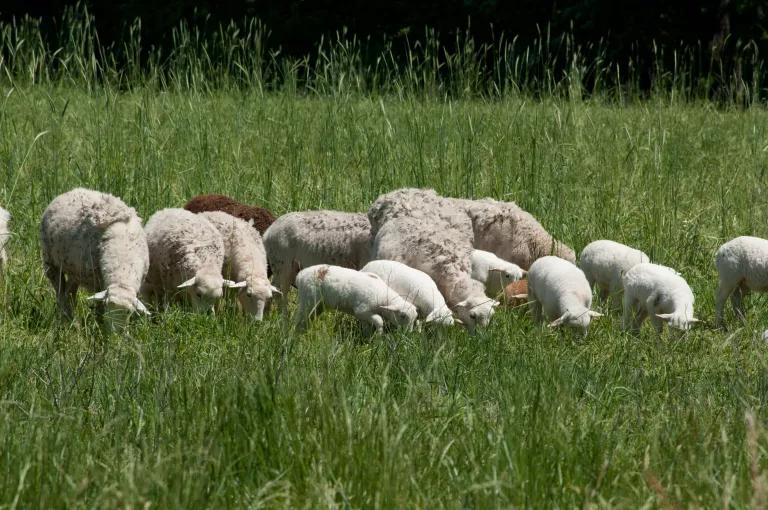
Rotational Sheep Grazing on Pastureland in Virginia
Principle 2: Understand your Social and Environmental Context
Growers emphasized the importance of context when they spoke with us. They ask, “What is the larger ecosystem of my farm/ranch? What are the waterways the land contributes to and sources from? Is water availability secure or scarce, and how does that water availability influence what I choose to grow on the land? What are other natural resource limitations? What community am I feeding? Does my community have needs that I can meet on the farm/ranch?” In asking these contextual questions, regenerative growers understand their place in and the contributions they can make to the food producer web. Regenerative growers constantly check in with their social and environmental settings and iterate their on-farm practices based on changing conditions.
Understanding the unique resource and environmental conditions of any individual farm or ranch empowers farmers and ranchers to make holistic land and business management decisions that better support their farm and the community. We learned that innovation based on one’s social and environmental contexts is also a way to pay homage to Indigenous understandings of agriculture.

Farmers & Conservationists Touring Watershed Protection Practices on Farm
Principle 3: Prioritize Soil Health
A lot of the magic of agriculture happens underneath our feet between the root systems teeming with microbes and mycorrhizal fungi. Long living roots play a role in feeding microorganisms and, in turn, these microorganisms help feed the plants year-round. These incredible plant and mycorrhizal networks are also responsible for creating porous soil to help retain water and provide plants with water during drought.
Regenerative farmers and ranchers understand the power of healthy soil. While their techniques for caring for the soil vary with the context of their farm (see principle 2), generally, regenerative growers limit mechanical soil disturbance like tilling. Instead, they preserve the biological structures that bacteria, fungi, and other soil microbes build underground and employ agricultural practices that feed that diverse underground community.
Principle 4: Reduce Reliance on Synthetic Inputs
Regenerative farmers and ranchers tried to reduce their reliance on synthetic inputs, such as herbicides, pesticides, and chemical fertilizers. While many of the farmers and ranchers we spoke with were organic producers, some regenerative farmers still used chemical inputs as a tool of last resort – for example, using herbicides to target invasive plant species. However, most of our interviewees found that in the process of prioritizing soil health, they naturally progressed towards needing fewer and fewer chemical inputs. Instead, as beneficial insects and wildlife returned and diverse crop and livestock rotations disrupted weed cycles, the ecosystem would naturally return to balance.
Farmers and ranchers also appreciated the reduced health risks from avoiding contact with toxic chemicals, as well as the financial independence and increased profitability from avoiding the significant annual costs of synthetic inputs.
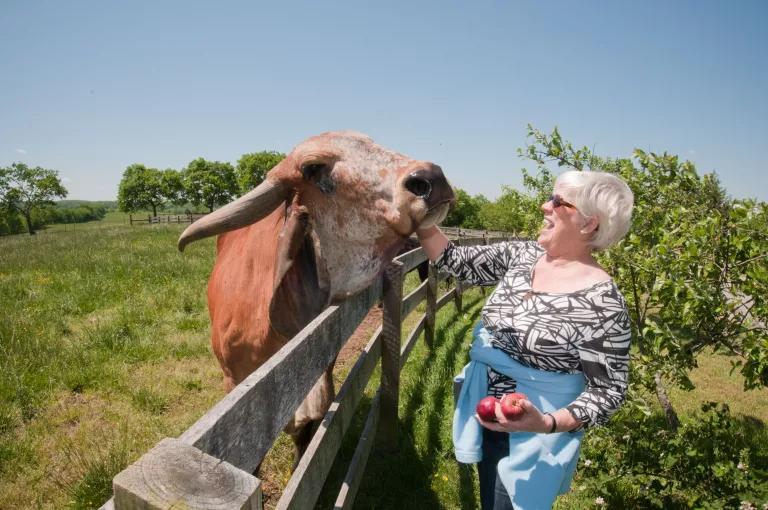
Virginia's Brookview Farm Co-Owner Checking In With Pasture-Raised Cows
Principle 5: Nurture Communities and Reimagine Economies
This last principle was profound for our team, and it relates very deeply with the first principle of nurturing ecosystem relationships. We learned that relationships in regenerative agriculture go beyond on-farm practices to include relationships with coworkers, with history, with consumers, with their communities, and with the self. For example:
- Regenerative growers spoke about their farmworkers, apprentices, interns, and other on-farm laborers with respect. Even if they’re not primary decision makers, on-farm staff are provided fair wages and a seat at the decision-making table.
- Some of our interviewees spoke about our country’s history of racism and how that has shaped American agricultural policy, even though American agriculture was built by Black and Indigenous communities.
- For our interviewees, one of the primary motivations for getting into regenerative agriculture was to grow healthy food for their families and for their community. Many shared that they were uncomfortable with not knowing where their food came from, and that transitioning to regenerative agriculture was a way to reestablish relationships with their food. In the process, they knew they could grow healthier food for their community.
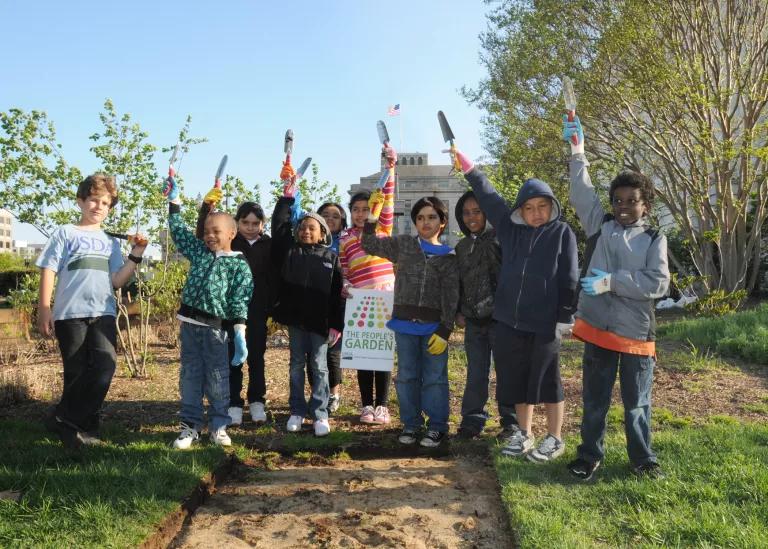
Children Volunteering at USDA's People's Garden
- Being neighborly is an important value within the agricultural community, and regenerative growers have extended this value into a modern age by sharing their resources and knowledge over social media and developing relationships that can even span continents. They’ve created pathways with fellow regenerative and conventional growers to lend a literal helping hand and be there for one another in what is, arguably, the most demanding career in existence.
- The notion of ‘success’ for our regenerative interviewees went beyond yield and farm size, and included things like joy and happiness, the number of families they feed, watching how the land regenerated and flourished, the money saved from not purchasing chemical inputs, the debt avoided by repurposing old equipment, and the relationships they built with community members. This says something about the way regenerative growers think about the economies they participate in.
The way we see it, regenerative agriculture goes beyond on-farm practices and techniques to encompass broader social and cultural components. Each of these principles builds on and relates to others. For example, prioritizing soil health helps reduce the use of synthetic inputs, which helps protect ecosystem relationships while also contributing to the welfare of a community. And the last principle pushes all of us to think more deeply about the history of our food system and imagine what our individual roles could be in a regenerative food web.
These principles helped our team realize that advocating for regenerative agriculture needs to address social, cultural, and historical issues. We are ready to make our contribution to the regenerative producer web: A more holistic policy platform that pushes for transformational changes to our food and fiber system alongside the grassroots organizations, community leaders, artists and revolutionary farmers we are learning from.



